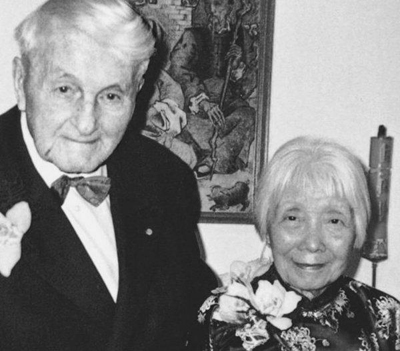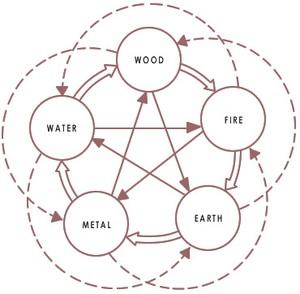Chinese Cosmology
Contained in the phrasing ‘Chinese cosmology’ is of course, the highly biased notion that there is just one genuinely valid, Chinese view and that that outlook is universally accepted and shared by all Chinese people; or indeed that it has remained the same consistent cosmology throughout each and every dynasty, a clearly insupportable proposition. Indeed the subject has been a topic of very serious contemplation and debate throughout China’s long and illustrious history.
Perhaps the one scholar who best articulated an easily understood explanation for the western mind was Joseph Needham. Needham, a highly respected English scholar, awarded membership of the Royal Society for his internationally recognised work in biochemistry became the great doyen of sinology
(the study of all things Chinese) with his seminal work Science and civilisation in China, which by the time of his death in 1995 had reached eighteen volumes and is currently running at twenty eight; his work being continued by the renowned Needham Institute attached to Oxford University.
Needham was to succinctly point out a principle difference between ‘the dominant strain of ancient Chinese thought and the religiously generated European idea of a transcendent deity, the perpetual battle between spirit and matter, or scientifically, as a mechanism consisting of objects and their attributes.’
He contrasted this to the traditional Chinese notion of ‘the universe as a complete, complex organism’.
‘Things behaved in particular ways’, wrote Needham, “not necessarily because of prior actions compulsions of other things, but because their position in the ever moving cyclical universe was such that they were endowed with intrinsic natures which made that behaviour inevitable for them.”

Professor Joseph Needham and his second wife – Lu Gwei djen
In this world view, rather than being created out of nothing, the world evolved into its present condition of complexity from a prior state of simplicity and non-differentiation. The present state is one of differentiation as expressed by the concepts of yin and yang and their associated processes of interaction through the ubiquitous wu xing or five elements, (Earth, Metal, Water, Wood and Fire).

The Five Elements and Three Cycles
In other words, the cosmos continues to change, but there is a pattern to that change discernable to human beings. Observation of the seasons and celestial realms, and their prehistoric methods of divination such as plastromancy and scapulimancy (divination using tortoise shells and animal shoulder blades) as well as dream construal, but in particular the interpretation of the hexagrams of the I-Ching allowed people to understand the pattern of the universe as a whole by focussing on the changes taking place in one of its meaningful parts.
It is safe to say that by tradition, mainstream Chinese cosmology has always been predicated on the premise of Heaven above, Earth beneath and Man in between. This is reflected in almost every aspect of the endemic (native), Taoist culture and is the basis from which all of the explorations of the natural world were made by the proto-scientists of even the very earliest east-Asian cultures, right through to the scholars of the late imperial period.
This led to the generally accepted Taoist perspective on life of the Three Lucks informing the basis for human interaction within this matrix: First is Destiny, then comes Man’s own self made Luck followed finally by Feng Shui.

An illustration of the Undifferentiated and the Differentiated:
Yin and Yang and the beginning of the Eight Trigrams of the I-Ching.
